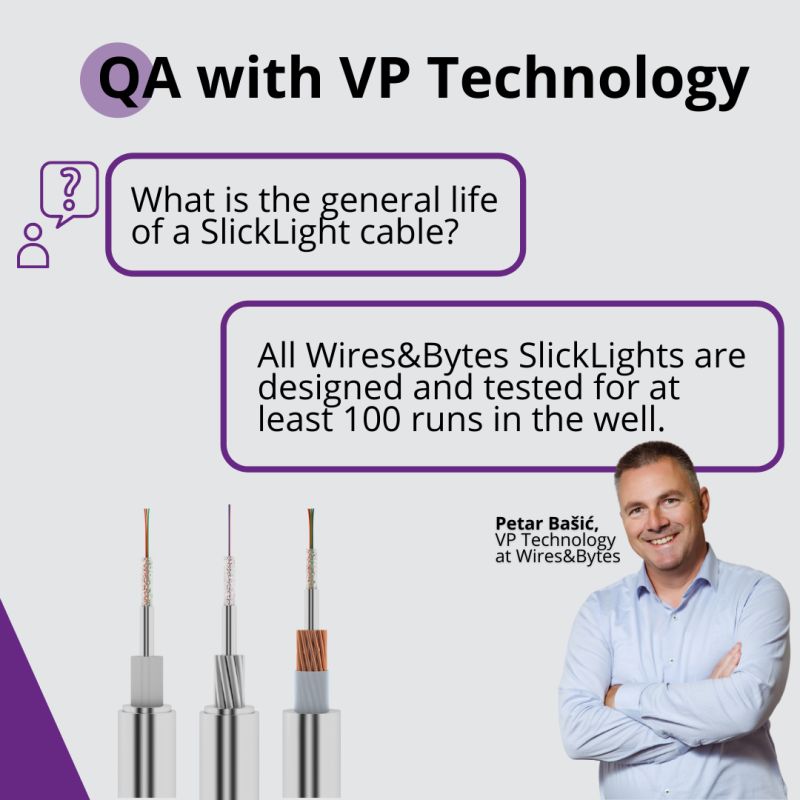Come see us at ADIPEC! Find the samples of real Wires&Bytes products at the GOWell booth #3308,4110 (Hall 4) as well as grab the flyer about SlickLight-C.
If Wires&Bytes innovative electrical telemetry, power supply and fiber optic products and solutions seem interesting to you, please contact Saeed Rehman or Petar Basic to arrange a meeting for a detailed presentation!
When: 31 October — 3 November
Venue: Abu Dhabi National Exhibition Centre
𝘏𝘰𝘴𝘵𝘦𝘥 𝘣𝘺 𝘵𝘩𝘦 𝘈𝘣𝘶 𝘋𝘩𝘢𝘣𝘪 𝘕𝘢𝘵𝘪𝘰𝘯𝘢𝘭 𝘖𝘪𝘭 𝘊𝘰𝘮𝘱𝘢𝘯𝘺 (𝘈𝘋𝘕𝘖𝘊), 𝘈𝘋𝘐𝘗𝘌𝘊 𝘪𝘴 𝘵𝘩𝘦 𝘸𝘰𝘳𝘭𝘥’𝘴 𝘮𝘰𝘴𝘵 𝘪𝘯𝘧𝘭𝘶𝘦𝘯𝘵𝘪𝘢𝘭 𝘮𝘦𝘦𝘵𝘪𝘯𝘨 𝘱𝘭𝘢𝘤𝘦 𝘧𝘰𝘳 𝘰𝘪𝘭, 𝘨𝘢𝘴, 𝘢𝘯𝘥 𝘦𝘯𝘦𝘳𝘨𝘺 𝘤𝘰𝘮𝘱𝘢𝘯𝘪𝘦𝘴 𝘢𝘯𝘥 𝘱𝘳𝘰𝘧𝘦𝘴𝘴𝘪𝘰𝘯𝘢𝘭𝘴.

With the continuous development of fiber optics for telecommunications and measurement, overhead power lines are becoming the best example of the interplay between electric power transmission and long-distance light propagation. The gradual replacement of ground wires with optical ground wires (OPGW) over the years has made it clear that the two go hand in hand in long-distance power lines, providing high-speed communication and the modern Internet in every corner of the world.
It started with OPGW and telecommunications, but it doesn’t end there. Being dielectric in nature, optical fibers will offer more and more possibilities for overhead power lines, which are high-voltage environments with a high electric field. For example, thanks to the successful implementation of optical fibers in the ground wire, OPGW is becoming an element of power line monitoring systems, and in many different forms. Such systems can determine locations of increased environmental temperatures in the event of forest fires or lightning strikes on transmission lines, as well as short circuits and unauthorized activity in protected or hazardous high voltage areas, all with a spatial accuracy of just a few meters.
Application of modern fiber optic monitoring systems on the OPGW allows to:
Interested in this technology? Contact us for details!

Also take a moment to read our case study and watch our short educational videos:
⚡DFOS monitoring technology for overhead power HTLS conductors installation
⚡FOS technology integrated in OPGW
⚡Monitoring of suspicious activity near power lines using OPGW
Coiled tubing, also called flexible tubing or CT, is a long continuous string of tubing spooled on a large reel. The technology was developed in the 1950-s but became widely used in the late 1980-s.
A coiled tubing unit (CTU) is used for development and refurbishment of oil and gas wells. The advantages of CTUs are that because of its shape the pipe can reach horizontal and side outflows without extra time spent on assembling/disassembling the tubing. This is what makes this technology cheaper and more eco-friendly than the traditional methods.

Field of application
CTUs are generally used for oil fields exploration, drilling and maintenance work. However, it is now being used for extraction of high-viscosity oil.
The technology is most widely used in the northern regions of Canada and the USA (Alaska).
Coiled tubing equipment
CTUs are used to transport and deploy the pipe of a necessary diameter into the well.
The equipment, mainly, installed on a self-propelled chassis or a semi-trailer.

The pipe size is adjusted to the type of operation. The usual diameter variation is within 19-114 mm. The pipe is spooled on the operating coil, which is installed on the truck frame. The pipe then goes through the injector head which creates a charge strong enough to push the pipe into the well considering friction force and pressure loss in the well hole.
Wires&Bytes fiber optic cables for coiled tubing
When coiled tubing is used for drilling and maintenance, it is necessary to deploy the equipment into a given part of the well and track its operational status. Wires&Bytes retrievable downhole cables are widely used for such purposes. Some cables can be manufactured as electrical, optical and hybrid.
At various stages of exploration of the oil field and during the maintenance of these wells, it is imperative to monitor the ongoing processes of the output well, in particular the temperature along the stem. Distributed temperature sensing (DTS) requires sensing cables with optical fiber as a distributed sensor. Wires&Bytes produces a line of sensing cables which are best suitable for such task. We use fiber resistant to extreme temperature to monitor temperature in CTU. The cable is located inside the pipe in the output well and is protected from harsh environment. We use 316 stainless steel and superalloys Incoloy 825 and Inconel 625 in our tube production. Armor wire is made of galvanized improved plowed steel or galvanized extra improved plowed steel or Ni-based alloys for higher corrosion resistance.
Please contact us for detailed information about designs suitable for Coiled Tubing application.
07 Sep 2022
How much the ground moves during an earthquake depends strongly on near-surface structure. And the shakings can be highly variable. Though the scientists have to admit, that the physics behind this variability is not entirely clear, partly because high-resolution instrumental observations are rare.
And here comes the fiber optic technology, particularly Distributed Acoustic Sensing which has a great potential for high-resolution seismic hazard mapping in urban areas.

On 4th July 2019 an M6.4 earthquake occurred near China Lake and Ridgecrest, California, followed by an M7.1 mainshock 34 hours later. Five days after the mainshock scientists used DAS enabled fiber optic cables (they basically repurposed an existing underground dark 10-kilometer fiber optic cables into seismic arrays) and performed high-resolution subsurface imaging which usually had been challenging. The Ridgecrest DAS array detected six times more aftershocks than the standard earthquake sensors within 3 months and allowed the team to build a model with sub-kilometer resolution 2 orders of magnitude higher than conventional models.
The model showed that along the length of the fiber, the areas where aftershocks caused more ground motion generally corresponded to those where shear velocity was lower.
As scientists say, seismic hazard and site amplification studies usually focus on ground motions (displacement, velocity, acceleration, etc.), while DAS measures the along-fiber strain field averaged over a finite gauge length.

The results of this research demonstrated that DAS-based noise tomography can capture subsurface structural heterogeneities. Such fine-scale seismic hazard mapping can improve urban seismic risk management, being both effective and inexpensive tool especially in urban areas where fiber optic networks are present already.
The use of DAS for seismic monitoring has very optimistic forecasts to play a fundamental role in the next generation seismic networks. The current tendency at local universities is to acquire DAS systems and use them with growing telecommunication network.

Wires&Bytes Non-Metallic MultiSense has already been deployed: it fits well to this application as it combines strain-coupled and strain-free fiber configuration. It has fibers with different strain sensitivities and it enables revealing more information on low frequency ground movement and acquisition of different types of seismic waves. Strain sensing fibers in the armor layer can be stranded to the customer specified helix lay-length, tuning the strain sensitivity of the cable and customizing it to a magnitude, exceeding the physical possibilities of uncabled optical fibers.
Interested in DAS enabled fiber optic cable technology? Contact us today and we will be able to present and offer you the best solution!
Source: Geophysical Research Letters, https://doi.org/10.1029/2021GL096503, 2022
It took a while for this to happen and the right prototype to be created, it may still take a few more months, perhaps years, to explore in detail what all this has to offer to the well intervention industry, but the most important thing is that it’s already here and it’s a good fit for a geothermal project!
New fully metallic multipurpose MultiSense is a DFOS cable for standard and elevated temperature ranges (180°C or 356°F) and has a size of a standard slickline of 4.60 mm (3/16 in).
It is designed to support different measurement configurations and scenarios and can be produced in several versions to fit application requirements.
For example, in a standard version it is a perfect solution for permanent installation attached to the production tubing or embedded into cement casing. In a version with a strength wire member (i.e. replacing one tube) added to internal stranding layer it can be used for well intervention just like a standard slickline. In another slightly different configuration it can be injected inside Coiled Tubing (CT).
All this is to exploit its main benefits – simultaneous and combined use of coupled fibers and loose fibers as an integrated means for acquisition of independent data. Since the design inherits all the benefits of metallic MultiSense initially designed for Structural Health Monitoring applications, and now being applied in a well intervention industry, different measurement principles are supported and can be combined and conducted together in a single slickline size of 4.60 mm. Good overview of different data types can contribute significantly to a better and easier event and data interpretation. These include Raman – DTS, DAS, BOTDA/R and Fiber Bragg Grating (FBG) types. Since all sensing elements are helically stranded inside the cable, the design is flexible enough to be spooled onto standard slickline or wirelines units. In general, the flexibility in design and production opens possibilities to support other customer-born proprietary measurement concepts that are yet to be proposed and realized.
Civil infrastructures all over the world often make use of underground development being a perfect choice when it comes to crossing mountain ranges, connecting islands to continents, managing urban and extra-urban roads, rail and road traffic, running large hydroelectric power plants, etc.

Europe and the US have an extensive in-service tunnelling heritage. Many of these tunnels have been in operation for decades already and are therefore prone to deterioration and degradation, though they are still key elements in community life. Their decommissioning might have a strong impact on the economy, logistics, sustainable development (especially in “green” terms) and social activity.
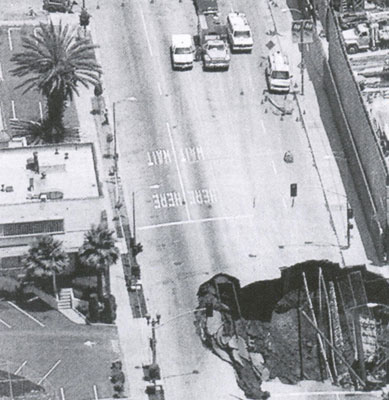
Thus, maintaining existing tunnels and proper construction of new underground infrastructures are crucial. And here come structural health monitoring systems that can be installed in tunnels, providing status information, and helping to manage maintenance.
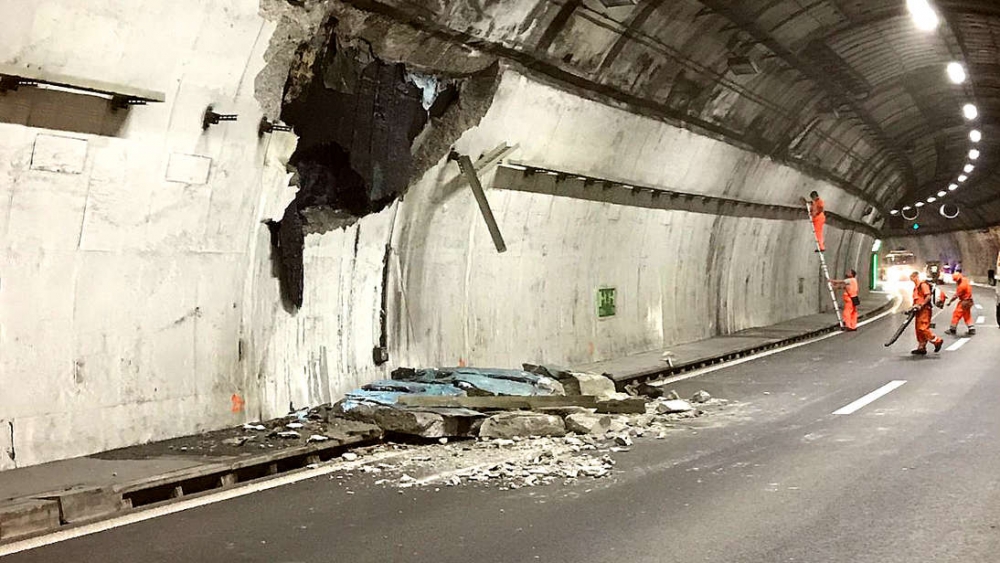
Fiber optic sensors is a key part in DAS, DSS, DTS and other fully distributed systems. DFOS allows monitoring of deformations and temperatures along the whole length of a tunnel offering unique features: measures of physical parameters (acoustic, temperature, strain, etc.) can be done of thousands of points from a single read-out unit. The sensing cable is not sensitive to electromagnetic disturbances, withstands hostile environments and does not require power supply. The whole length of the sensing cable can reach up to 30 km though tunnel disturbance events such as concrete cracks, deformations, water ingress, fire, and others can be localized quite accurate at the point of damage.

The monitoring system allows a fully automatic and continuous monitoring of the tunnel integrity, and rapid alerts can be generated based on predefined criteria. DFOS provides timely data that help maintain tunnels effectively before any major damage and increase the safety of the structure.
Wires&Bytes MultiSense cable can be a perfect choice for SHM of in-service tunnels. Despite its small size and low weight, it supports all types of DFOS and deliver multiple measurements.

The design combines 4 tight buffer stranded fibers in a stranding layer and 3 or 4 fibers in a central loose tube. Stranded fibers are in a tight physical connection to the outer plastic jacket, ensuring quality transfer of measurands to the optical fibers such as for DAS and DSS measurements.
Since 4 fibers are provided, a careful combination of
can provide information on distributed curvature and bending of the cable, as well as compensation of ripples in the Brillouin measurements resulting in profiling plain longitudinal strain measurement apart from other induces stresses.
Loose fibers in the central tube can be both single-mode and multimode type and can be used for building different measurement configurations, such as loops for more precise stimulated Brillouin measurement, or distributed temperature measurements for temperature compensation purposes. Its configuration, multifiber design and versatility were the reasons for MultiSense to be selected and used in several structural health monitoring projects including tunnel monitoring in Italy and France. Once deployed in the structure with secured access to both ends, the cable leaves it up to the operator and the expert to decide how it will be interrogated.

Get in touch today and we will be able to advise, supply, install and support your optimal solution!
FIMT is a robust tube made of corrosion-resistant steel with optical fibers inside. It can be used as a component to produce robust cables for distributed sensing and data transmission. Its simplicity (including its manufacturing process) and strength make it a perfect choice for Oil&Gas industry and structural health monitoring applications.
Main applications of FIMT:
FIMT can be used at temperatures up to +300°C and higher (for cable in the polymer jacket up to +260°C). Double-layer tube design significantly improves mechanical performance, especially resistance to crushing loads.
👉Learn more about FIMT
👉Fill out a questionnaire and describe your project requirements
Or send us a request and we’ll offer the best solution!
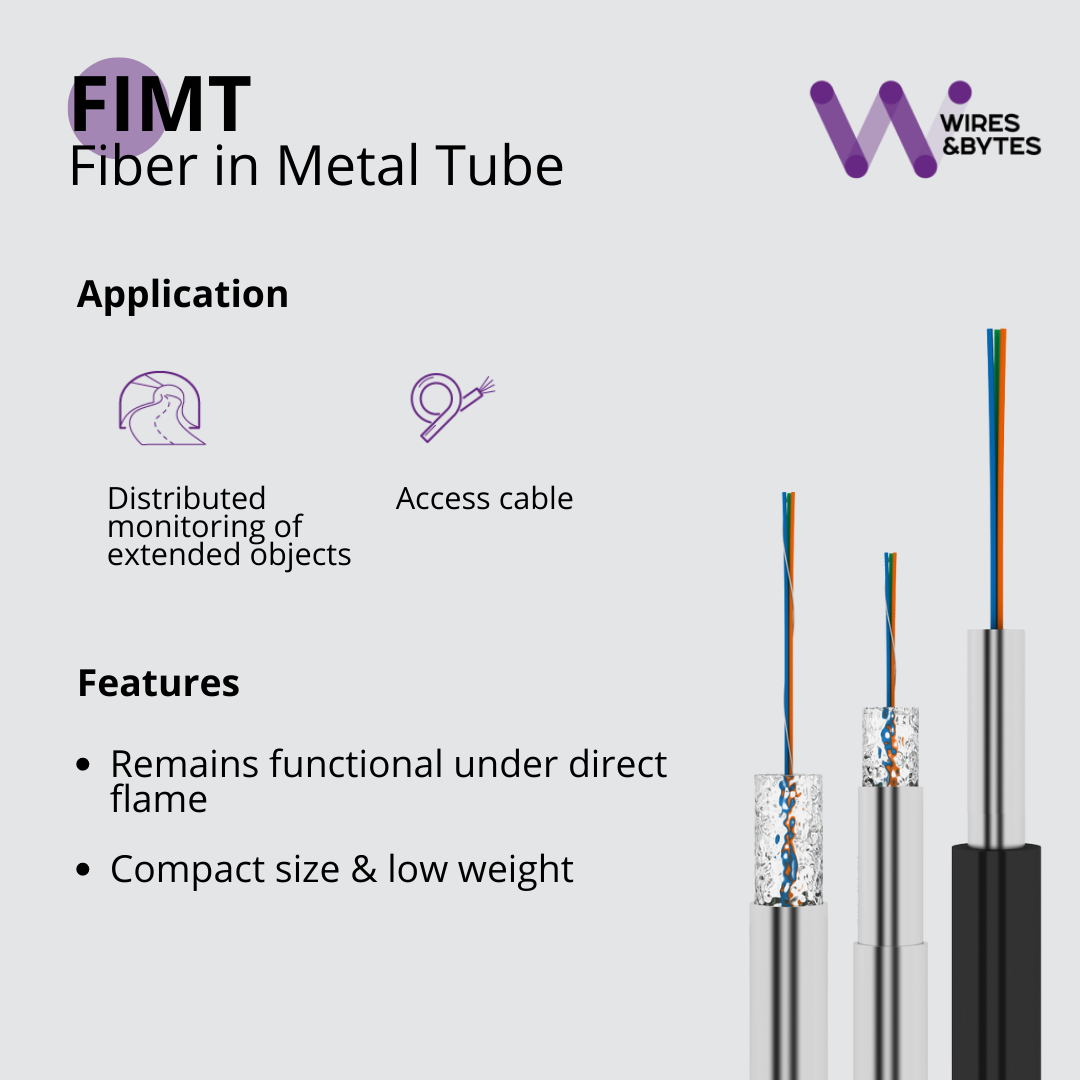
A client in the Middle East has successfully deployed a multipurpose electro-optical SlickLight cable which was installed inside Coiled Tubing and has now been used for multiple jobs that combine distributed temperature and acoustic measurements (DTS/DAS) with SRO e-line PL logging tools from a major WL service provider.
GOWell as our partner in the Middle East provided on-site support to prepare and ready the cable installation for data acquisition.
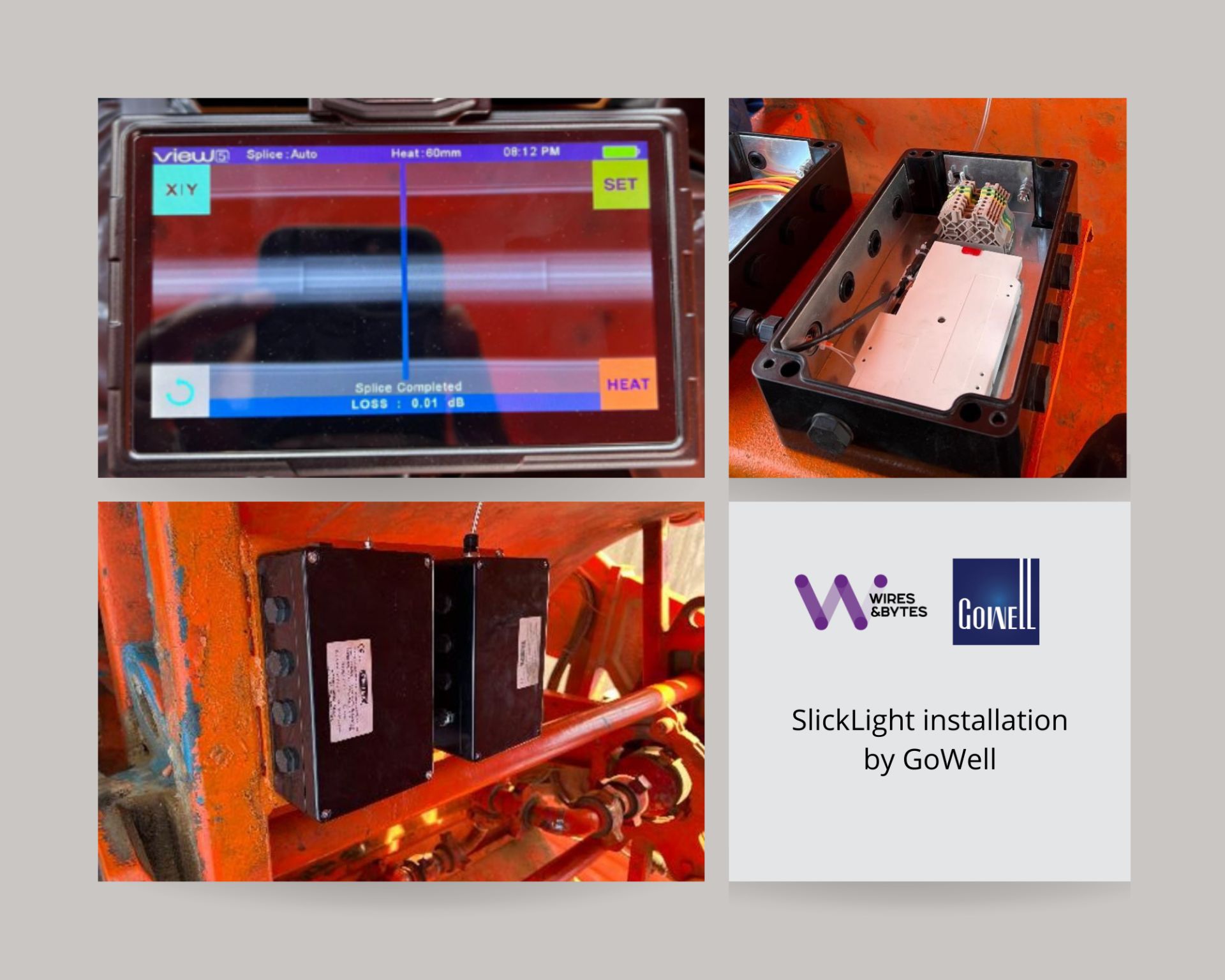
Looking for the best optical cable suitable for your project but don’t have time to explore the website and technical details? Then fill out our questionnaires directly on the Wires&Bytes website. We’ll review your request and get back to you with the best cable design offers ASAP.
The steps are simple:
Alternatively, here are the direct links to different questionnaires:
Petar Bašić, VP Technology at Wires&Bytes:
— SlickLights are DFOS slicklines that are retrievable downhole fiber optic cables designed to be used with common traditional slickline winches and equipment. When talking about design life, all the DFOS SlickLights (S and H types in particular) manufactured by Wires&Bytes are type tested for at least 100 well runs, collecting over 100TByte high value data during the lifetime. What really matters is efficiency in the triangle: acquisition of sufficient amount of data, low-cost operation and spending less time in the fields. If used properly, some designs can exceed 1000 well runs. For most efficient deployment of SlickLights please contact Wires&Bytes experts. They will take into consideration all important details of your wellbore data acquisition project and offer the best solution!
